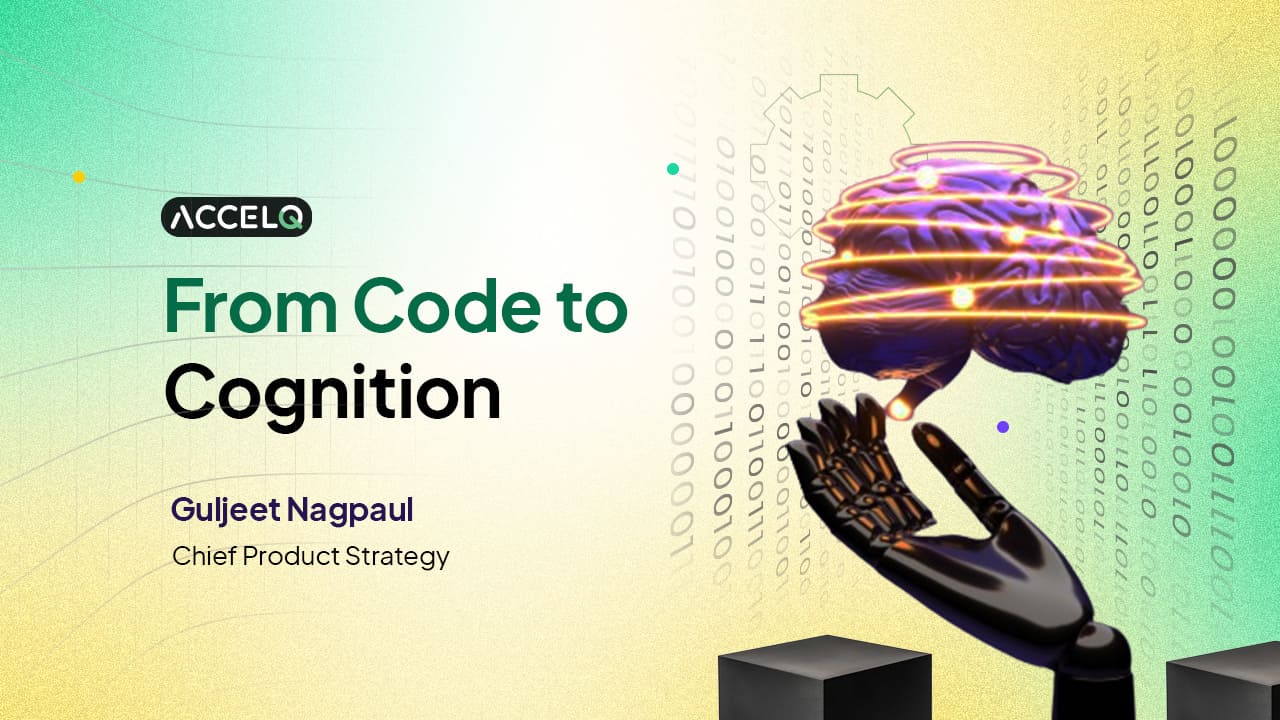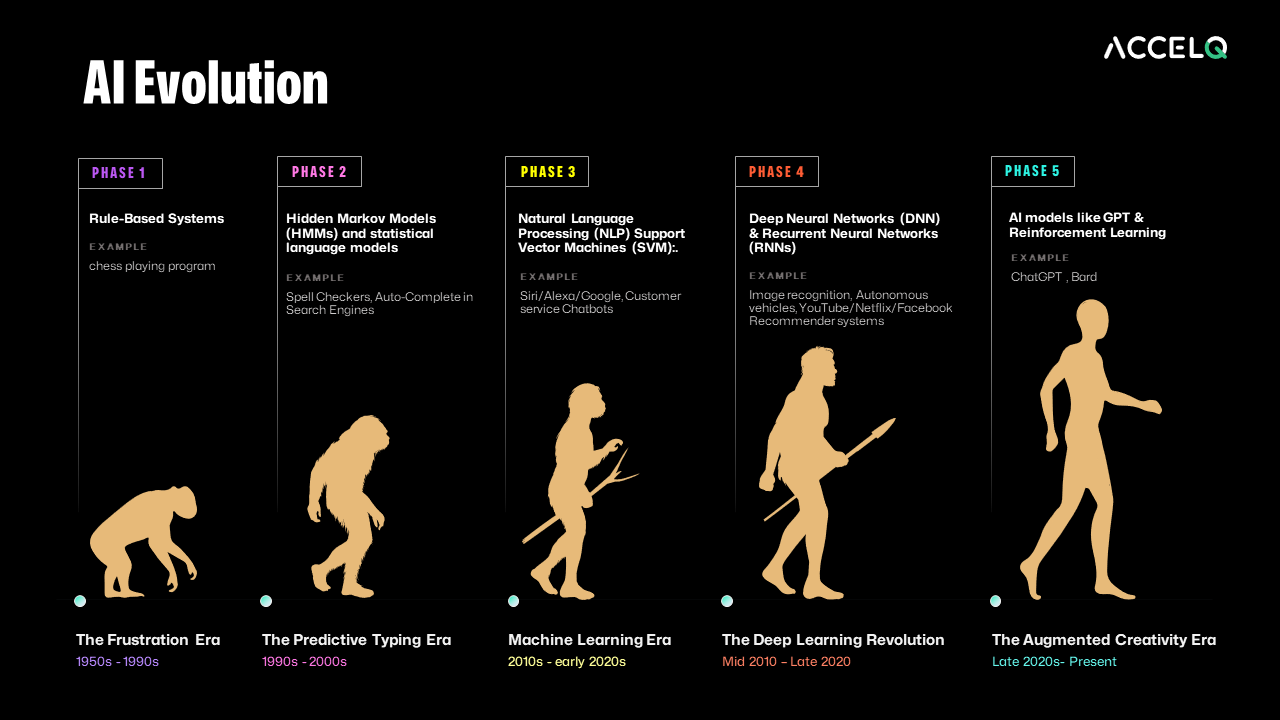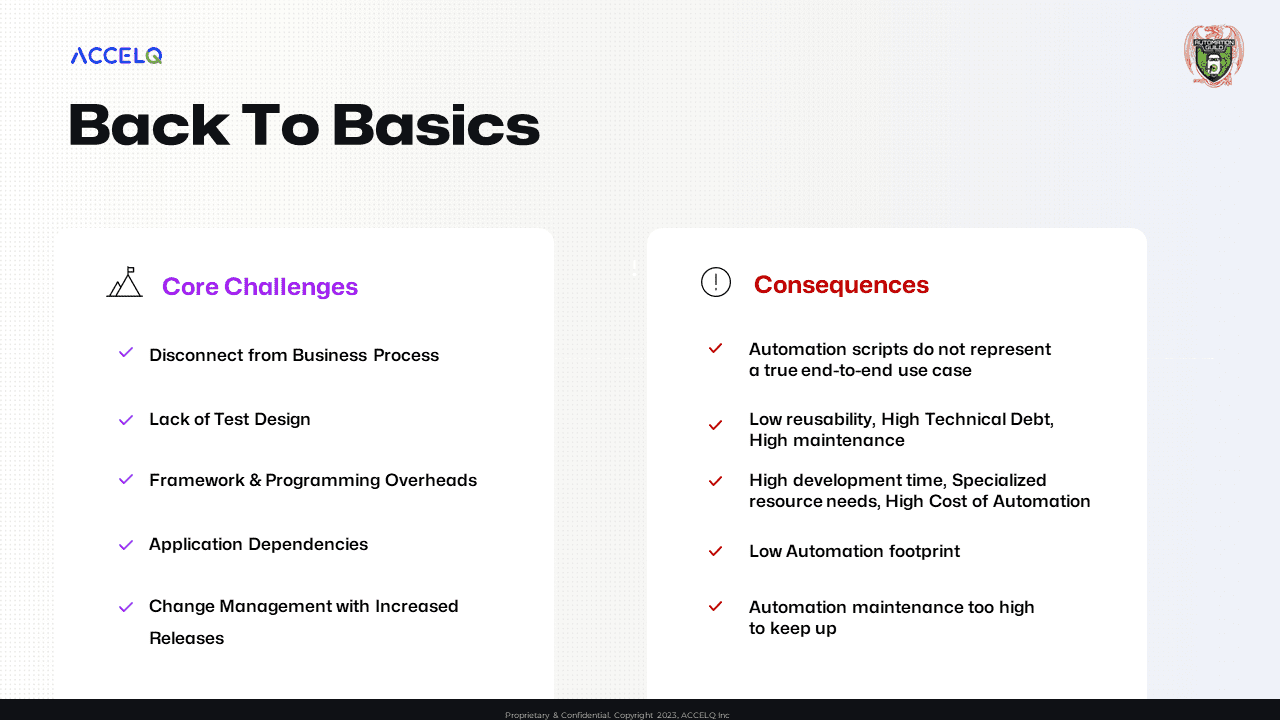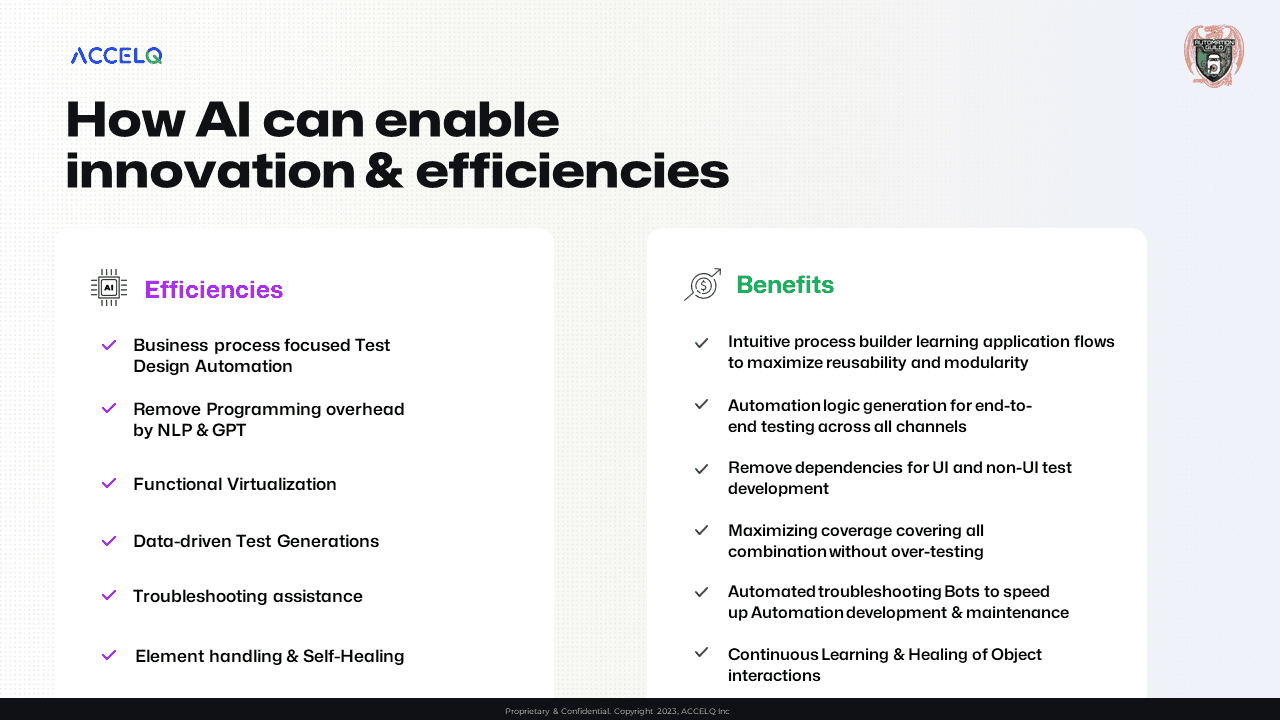Tracing the journey of AI and its impact on test automation.

Let us trace AI's journey and its scope and potential in the world of technology and test automation. Before we get started, here is a quirky story to liven up the mind and prepare for the facts that lie ahead.
Just after the First World War and during the Great Depression, the war veterans return home to take up farming to sustain the economic slowdown. Around this time, there was the proliferation of these gigantic Emu birds, who soon began waging war against these skilled military men on farms.
How? They begin creating a nuisance as they see this sudden spurt in farmlands around them. This leads to more emus migrating into the run, destroying crops and livelihoods! The ex-militia, along with the intervention of the government, take on menacing birds with all their might and deploy the choicest of ammunition to get rid of them! They fail miserably. Much to the shock and outcry from people around, the mighty birds win this battle by outnumbering men, and this day remains recorded in history.
Let us draw parallels to the point in discussion now- The evolution of AI in the realm of technology and test automation.
“Is AI the silver bullet? Does it hold the power to prevail as a be-all answer in technology?”
Let us first peep into the history of technological evolution that also coincidentally mirrors the birth of AI.
The evolution of AI is traced through 5 phases.
Phase 1: “The frustration era”
- The infancy phase was the largest, relying on rule-based systems to understand user input.
- It glorified if-then-else functioning and used hand-crafted rules to handle data.
- It also used patterns to handle data; complexities and ambiguity could not be handled.
- For example, such systems are chess-playing programs, credit scoring systems, or early spam-detecting filters.
Phase 2: Predictive typing era
- More technological maturity heralded the phase of early speech that helped with recognition models and transition between speech sounds.
- Primary models of algorithms, such as hidden macro models or flagship models, are statistical models that help improve the accuracy of understanding data.
- Predictive uses and probabilistic models were used to answer likelihood questions, translate using keyboards, converting handwritten text to a digital format.
Phase 3: Machine learning era
- More robust algorithms also include the NLP- the natural language processing era or virtual assistant era.
- The nascent era responded to queries using NLP techniques, tokenization, tagging, and entity recognition to understand text and ML algorithms.
- ML aspects also include unsupervised, supervised, and semi-supervised algorithms that were used.
Note: Let us also remember that other types of models in play here, like SVM or Support vector machines, are employed in NLP techniques for text classification and sentiment analysis to classify and understand the intent of the language and pattern of data used.
- Decision trees and random forests were used to help categorize user inputs for specific actions and commands, such as wave classifiers, Gradient boosting, and named entity recognition models.
- The outcome of all these developments includes the dawn of more mature models, such as Facebook automated translators, Twitter sentiment analysis, and Facebook spam filters, all of which help make predictions.
These lead to the next phase, with the signs of deep learning set in from the Machine learning phase.
Phase 4: Deep learning revolution
Here is a quick foreword for this phase: understanding the difference between Deep Learning and Machine Learning.
- ML= shallow learning for a moderate amount of labeled data, primarily manually engineered
- DL= uses unstructured data that is not yet dominant but was born out of phase 3 offset from ML
- Technology evolution played a role here—of both software and hardware that demanded more computational power to handle large volumes of unstructured data.
- This gave birth to the DP revolution in the last decade, where more complex algorithms were deployed.
- Models like RNL models, which have long and short memory, revolutionized sequence handling tasks like language translation and dialogue generation. While they played a role in sequence modeling, they also suffered from gradient challenges, leading to the next phase—the generative AI era.
Phase 5: Generative AI era -our present!
- The hallmark developments here include the birth of transformer architecture, which led to the self-attention mechanism that turned around NLP born in phase 3.
- This has enabled the development of GPT, large language models, and BERT, which have helped me understand context.
- Phase 4 saw monitoring systems like music generation, virtual reality, etc., but with phase 5, the creativity era is just getting started.
Why? Now, let us circle back to our earlier World War story—the emphasis is on the challenge of identifying the right tool for the right job!
We are nowhere near the end of the possibilities of what AI can do to technology, and all this while AI is evolving along with us! There is a lot left to be discovered.
How does one identify the accurate tool in the age of Generative AI?
Here is a quick recap of some facts before discussing the advent of Copilots. Let us recall the following:
- Testers began with codes in notepads and then came edit plus and smart tech editors—the early stage of IDEs for coding.
- Intelli-sense further eased up this task—when you search, you don’t need to find the exact phrase; it gets auto-completed.
- This is somewhere in phase 3, where progress was made with NLP. More AI-powered code assistants come into play to help with context-aware analysis, intent classification, and auto-complete codes.
- The subsequent development is where these models are further leveraged to create copilots. We are just about getting started with what we can do with codes.
Automation in testing- basics
Let us brush this up a little.
Where and what should we apply to solve issues –
- Disconnect from business processes since both testing and workflows are primarily disparate. Automation testing still needs to represent an accurate end-to-end omnichannel business process.
- Another impediment is the need for open-source test design. This was initially expected to address the core frustration of needing a sound test design at the foundation. However, this leads to low code reusability, high-tech debt, and high maintenance.
- Frameworks and programming overheads—Due to high development time, all of this defeats the purpose of achieving end-to-end validation.
- App dependencies for change management. Automation maintenance is undoubtedly an ROI killer! Add to this -higher release velocities and AI entry.
In all, automation needs to catch up! Agree?
How can AI enable innovation and efficiency in testing?
Lack of transparency between testing and validating business processes- Build an intuitive automation test design that flows across systems and has reusability and modularity. All of these need a sound test design without any additional cost and dependencies!
A Lean mean automation must be the motto.
AI helps with the following in the automation life cycle:
- No overheads- frameworks programming and technical debt
- Automation logic is generated across channels.
- Virtualization is everywhere, not just in API but also in the functional world.
- Getting started automation objectives without dependencies in the agile world- No waiting game for executing regression testing.
- Maximize test coverage and validate all test use cases.
- Troubleshooting for change maintenance– be it element handling or changed end-to-end flows.
Why ACCELQ?
At ACCELQ, we have embraced the evolution of AI in the testing realm. Our cloud-native platform introduces layers of AI infusion to resolve core efficiency issues in the automation lifecycle. These layers are introduced ground-up in a cloud-native platform that is more geared to achieving core efficiency in a proper test automation lifecycle. With collaborative test asset management with reusable test assets and live-release alignment with ERPs, we ensure maximum test coverage and valid end-to-end test automation.
Stay tuned to our resources section for a lot more buzz on our advanced no-code test automation powered by Generative AI! You may also get started with a personalized demo!
Guljeet Nagpaul
Chief Product Officer at ACCELQ
Guljeet, an experienced leader, served as North America's head for ALM at Mercury Interactive, leading to its acquisition by HP. He played a key role in expanding the ALM portfolio with significant acquisitions. Now at ACCELQ, he sees it as a game-changer in Continuous Testing. As Carnegie Mellon graduate, he oversees ACCELQ's Product Strategy and Marketing.
Discover More
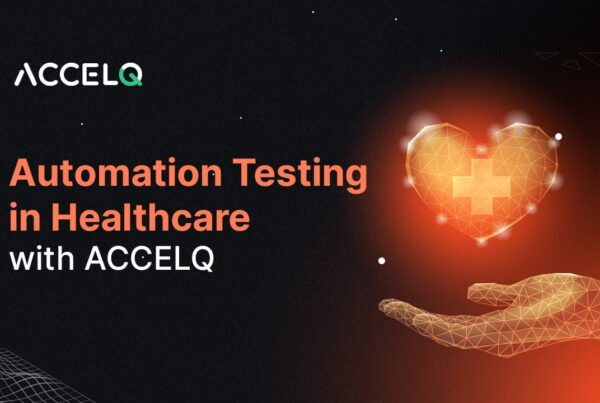 Test Automation in Healthcare with ACCELQ
Test Automation in Healthcare with ACCELQ
Test Automation in Healthcare with ACCELQ
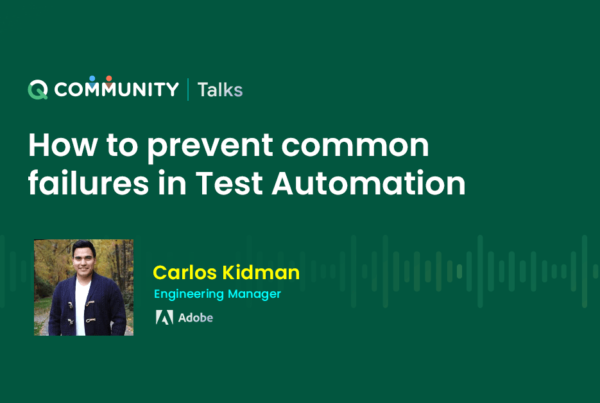 QCommunity Talks with Carlos Kidman-“How to prevent common failures in Test Automation”
QCommunity Talks with Carlos Kidman-“How to prevent common failures in Test Automation”






























